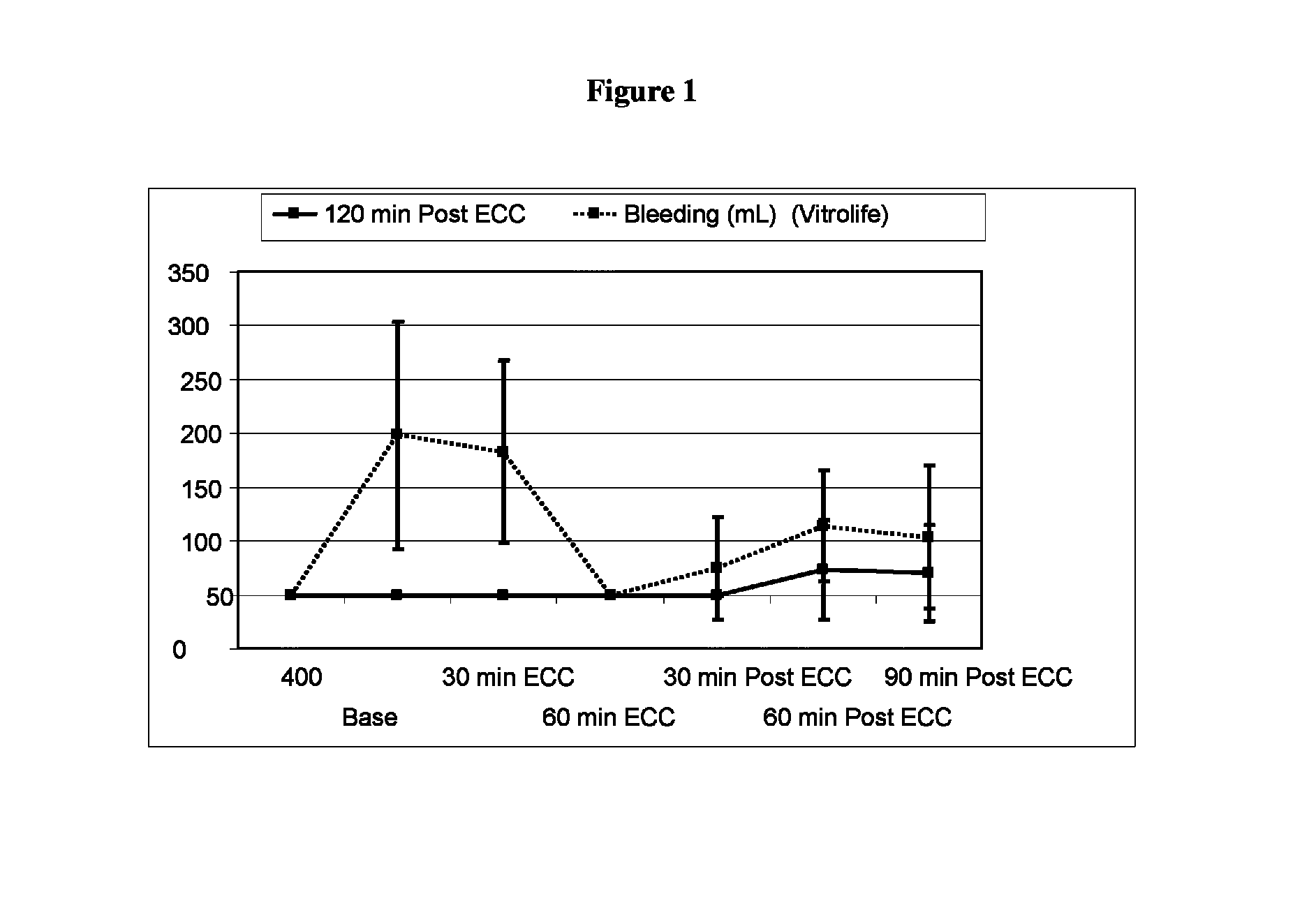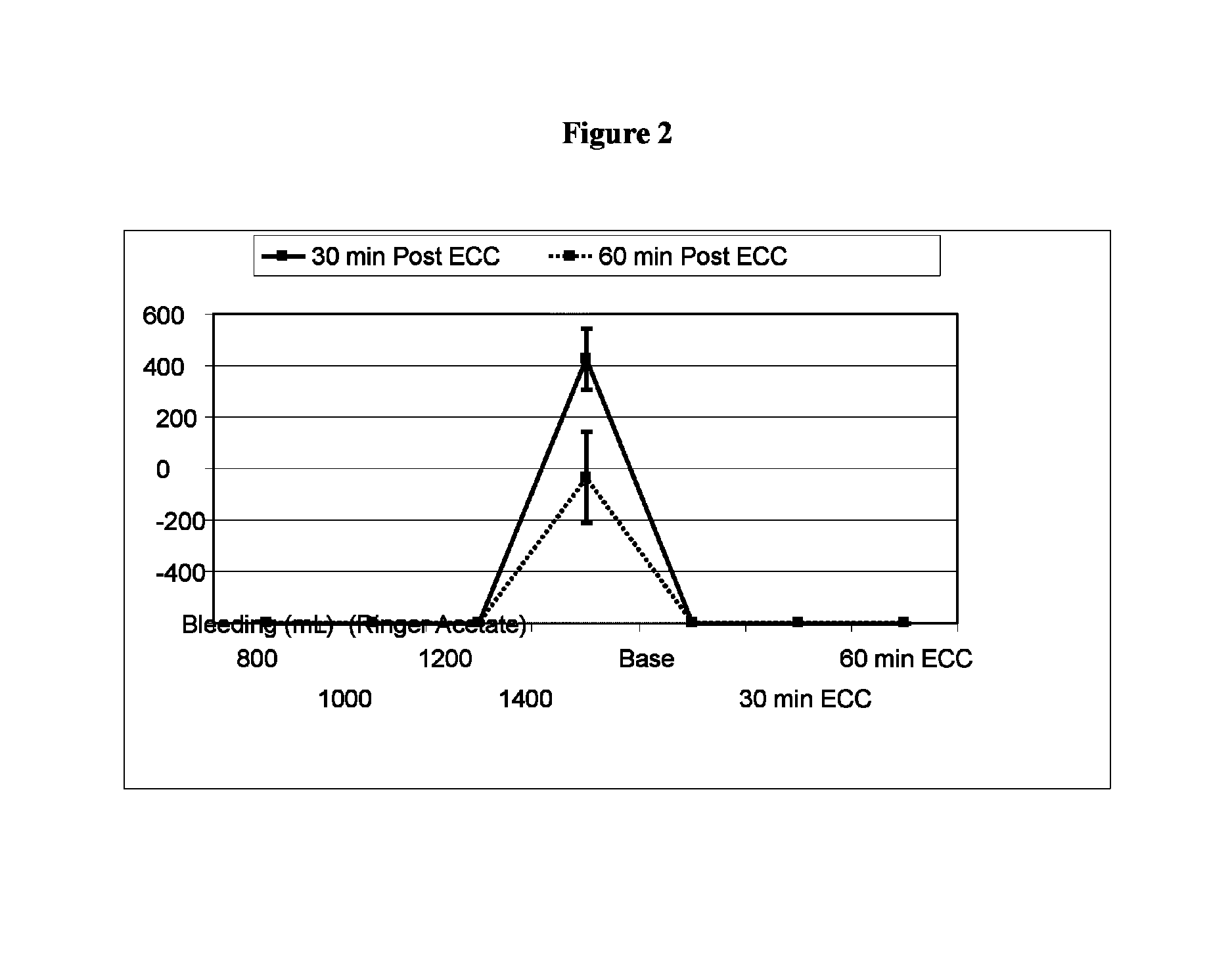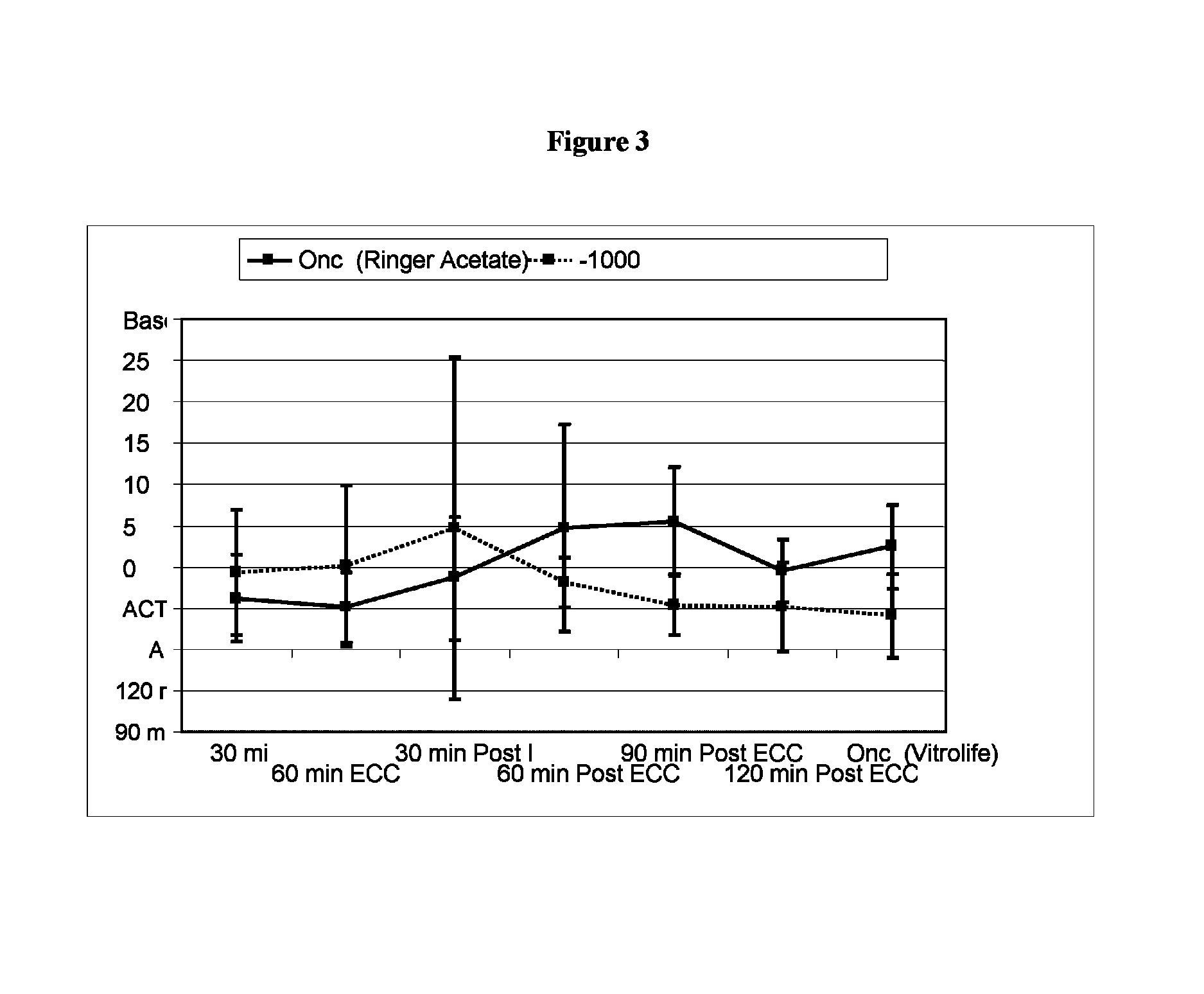Priming solutions for cardiopulmonary bypass
a technology of cardiopulmonary bypass and priming solution, which is applied in the field of priming solution, can solve the problems of harmful to patients, no consensus on priming solution, crystalloid or colloidal, etc., and achieve the effects of reducing systemic vascular resistance (svr) and mean arterial pressure, reducing the haematocrit, and reducing the svr and mean arterial pressur
- Summary
- Abstract
- Description
- Claims
- Application Information
AI Technical Summary
Benefits of technology
Problems solved by technology
Method used
Image
Examples
Embodiment Construction
[0053]Pre-Clinical Study on Animals of a Solution According to the Invention and Controls.
[0054]Animals and Animal Care
[0055]Sixteen Swedish domestic pigs with a mean body weight of 63 kg (range 60-72 kg) were used for the experiments. All animals received care in compliance with the “Guide for the Care and Use of Laboratory Animals” (NIH Publication 85-23 revised 1985). Before the experiment, all animals were fasted overnight with free access to water. After the experiments, all animals were euthanized by induction of ventricular fibrillation with an intravenous injection of potassium chloride.
[0056]Animal Preparation
[0057]All animals received premedication with intramuscular ketamine 10 mg / kg body weight and xylasin 0.2 mg / kg body weight. For anaesthesia induction, sodium thiopental 5 mg / kg body weight and atropine 0.02 mg / kg body weight were used intravenously. Pancuronium was given intravenously before the tracheotomy and introduction of the tracheal tube. During the experiment,...
PUM
| Property | Measurement | Unit |
|---|---|---|
| molecular weight | aaaaa | aaaaa |
| molecular weight | aaaaa | aaaaa |
| molecular weight | aaaaa | aaaaa |
Abstract
Description
Claims
Application Information
 Login to View More
Login to View More - R&D
- Intellectual Property
- Life Sciences
- Materials
- Tech Scout
- Unparalleled Data Quality
- Higher Quality Content
- 60% Fewer Hallucinations
Browse by: Latest US Patents, China's latest patents, Technical Efficacy Thesaurus, Application Domain, Technology Topic, Popular Technical Reports.
© 2025 PatSnap. All rights reserved.Legal|Privacy policy|Modern Slavery Act Transparency Statement|Sitemap|About US| Contact US: help@patsnap.com



